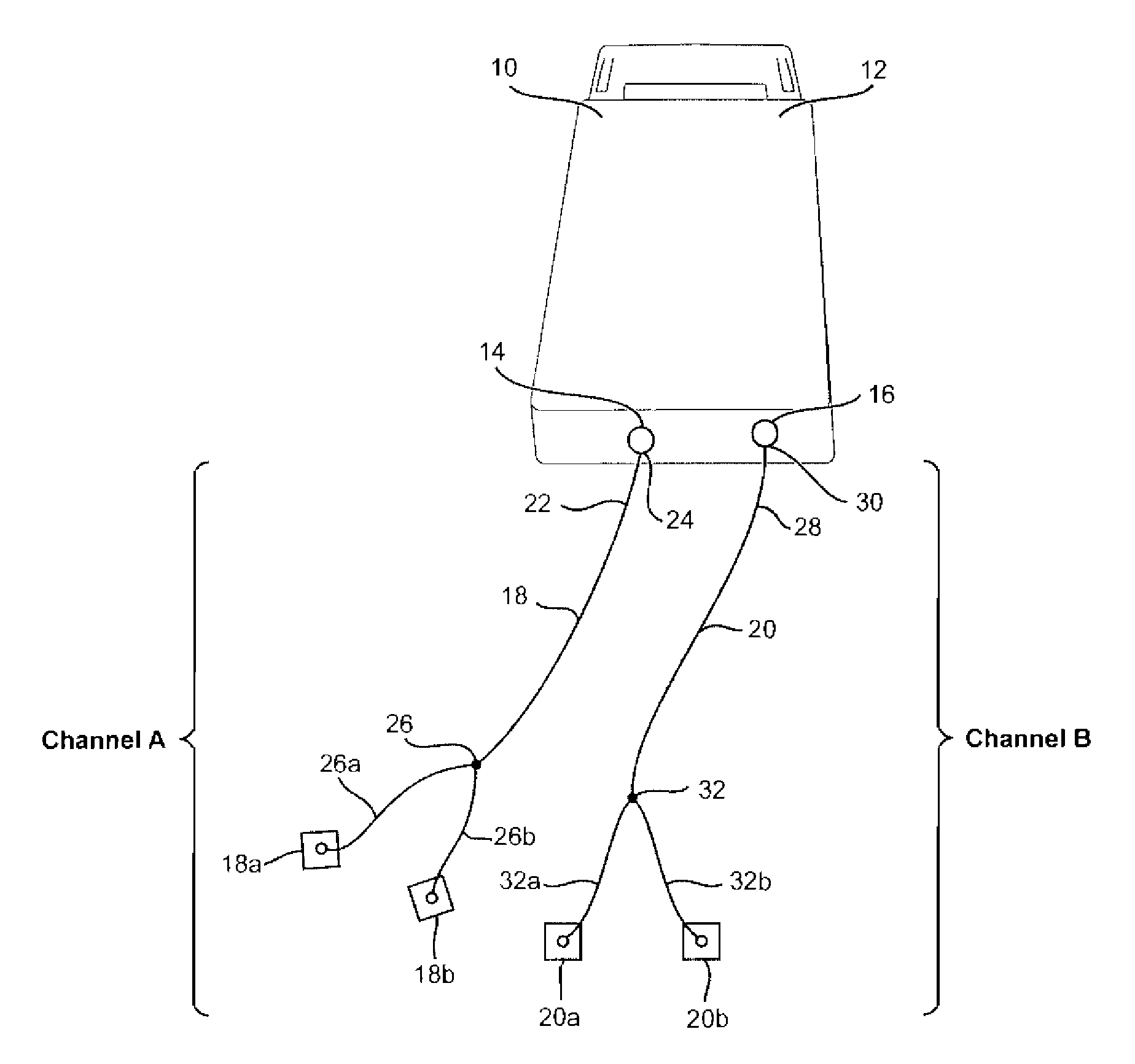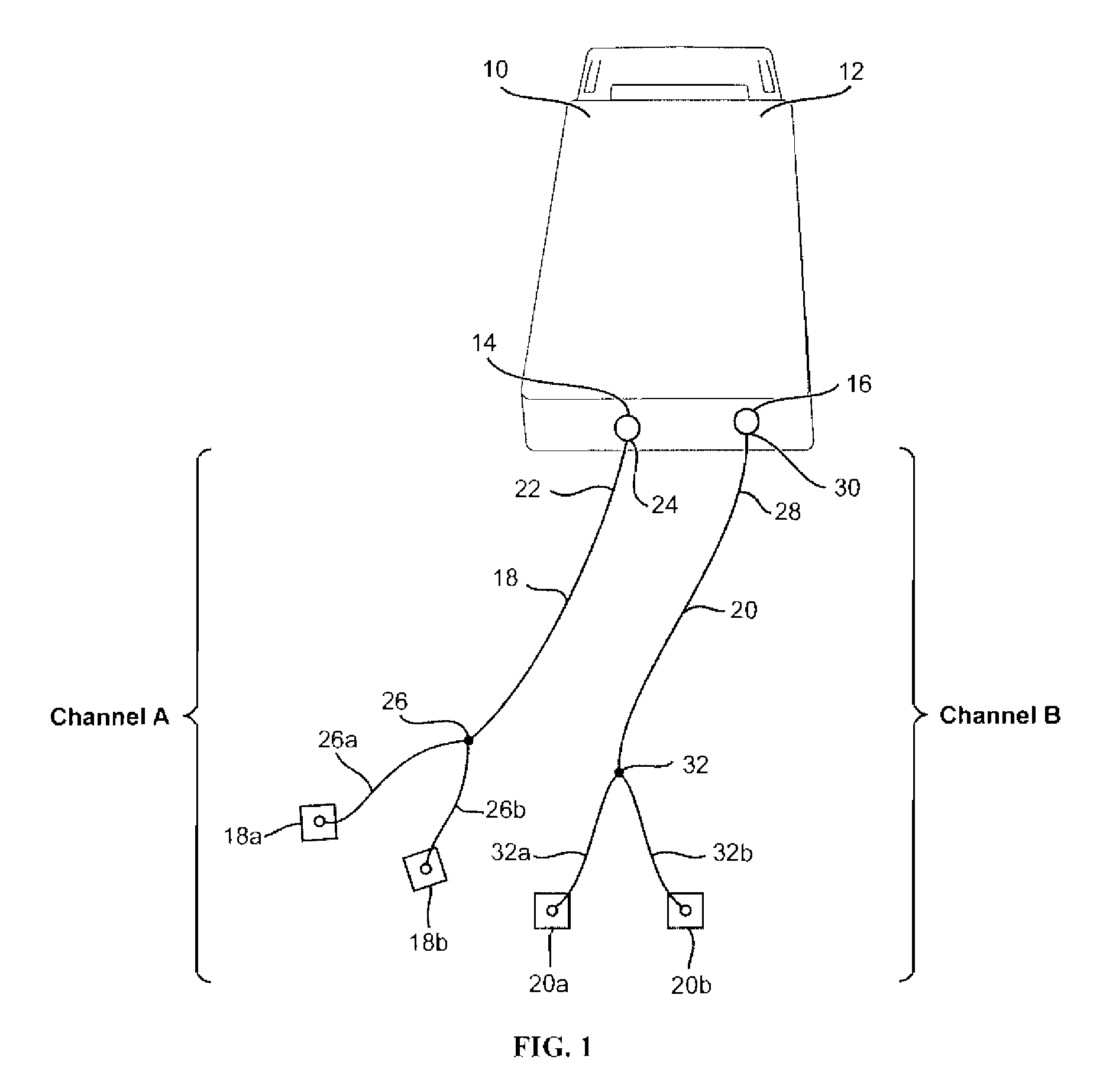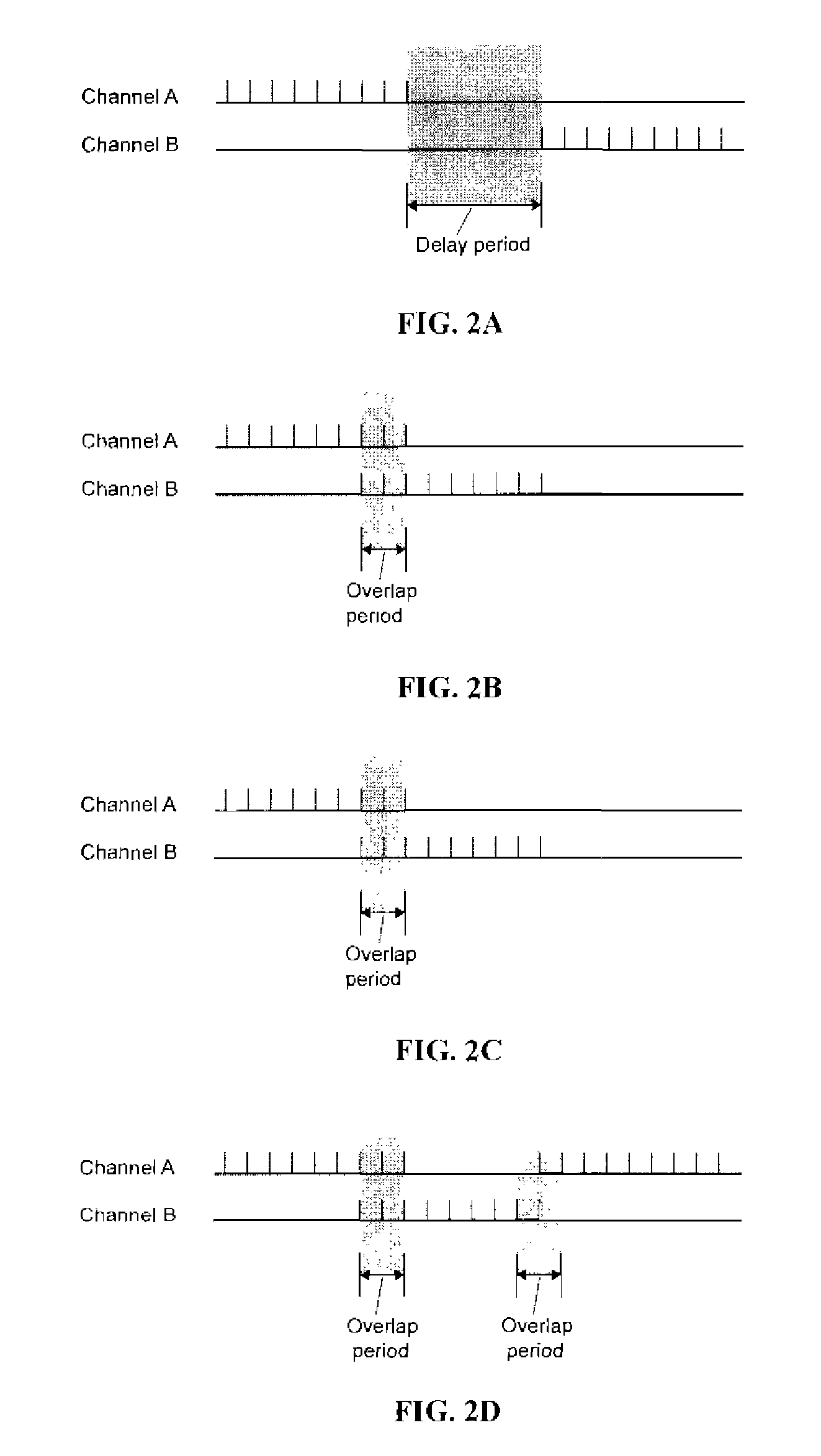Electrical Stimulation Method for Treatment of Peripheral Neuropathy
a peripheral neuropathy and electric stimulation technology, applied in the field of peripheral neuropathy treatment, can solve the problems of muscle weakness, sensitivity to touch, weakening and wasting of muscle tissue in the affected area, etc., and achieve the effects of reducing work output, improving sensation, and increasing work outpu
- Summary
- Abstract
- Description
- Claims
- Application Information
AI Technical Summary
Benefits of technology
Problems solved by technology
Method used
Image
Examples
first exemplary embodiment
[0091]In a first exemplary embodiment of the present invention, as generally illustrated in FIG. 3A, two pairs of electrodes are positioned in electrical contact with the patient's tissue in order to provide electrical stimulation to one or more of the muscles associated with toe and ankle dorsiflexion (or extension) and flexion (or plantar flexion) as a treatment for peripheral neuropathy in the lower extremities.
[0092]More specifically, as shown in FIG. 3A, a two-channel system is used to apply electrical stimulation to agonist / antagonist muscles involved in toe and ankle extension / flexion. For the first channel, a first electrode 18a is positioned in electrical contact with tissue to stimulate a motor point of the patient's extensor digitorum brevis muscle (extends the joints of the proximal phalanges of toes 1-4). Most preferably, first electrode 18a comprises a surface electrode that is positioned on the patient's skin on the dorsum of the foot over the first four metatarsal bo...
second exemplary embodiment
[0107]In a second exemplary embodiment of the present invention, generally illustrated in FIG. 3B, two pairs of electrodes are positioned in electrical contact with the patient's tissue in order to provide electrical stimulation to one or more of the muscles associated with ankle dorsiflexion and plantar flexion and ankle eversion / inversion as a treatment for peripheral neuropathy in the lower extremities.
[0108]More specifically, as shown in FIG. 3B, a two-channel system is used to apply electrical stimulation to muscles involved in ankle dorsiflexion and plantar flexion and / or ankle inversion / eversion. For the first channel (panel 1 of FIG. 3B), a first electrode 18a is positioned in electrical contact with tissue to stimulate a motor point of the patient's lower portion of the tibialis anterior muscle. Most preferably, first electrode 18a comprises a surface electrode that is positioned on the patient's skin over the mid-belly of the tibialis anterior muscle. A second electrode 18...
third exemplary embodiment
[0124]In a third exemplary embodiment of the present invention, also generally illustrated in FIG. 3C, two pairs of electrodes are positioned in electrical contact with the patient's tissue in order to provide electrical stimulation to one or more of the muscles associated with wrist flexion / extension, wrist pronation / supination, and / or finger flexion / extension as a treatment for peripheral neuropathy in the upper extremities. The treated muscles include the flexor digitorum superficialis, flexor carpi radialis, flexor carpi ulnaris, extensor digitorum, extensor digiti minimi muscle, extensor carpi ulnaris, extensor carpi radialis longus, and / or extensor carpi radialis brevis.
[0125]More specifically, as shown in FIG. 3C, a two-channel system is used to apply electrical stimulation to muscles of the wrist and fingers. For the first channel, a first electrode 18a is positioned in electrical contact with tissue of the patient's proximal palmar surface to stimulate motor points of the p...
PUM
| Property | Measurement | Unit |
|---|---|---|
| frequency | aaaaa | aaaaa |
| frequency | aaaaa | aaaaa |
| alternating frequency | aaaaa | aaaaa |
Abstract
Description
Claims
Application Information
 Login to View More
Login to View More - R&D
- Intellectual Property
- Life Sciences
- Materials
- Tech Scout
- Unparalleled Data Quality
- Higher Quality Content
- 60% Fewer Hallucinations
Browse by: Latest US Patents, China's latest patents, Technical Efficacy Thesaurus, Application Domain, Technology Topic, Popular Technical Reports.
© 2025 PatSnap. All rights reserved.Legal|Privacy policy|Modern Slavery Act Transparency Statement|Sitemap|About US| Contact US: help@patsnap.com



